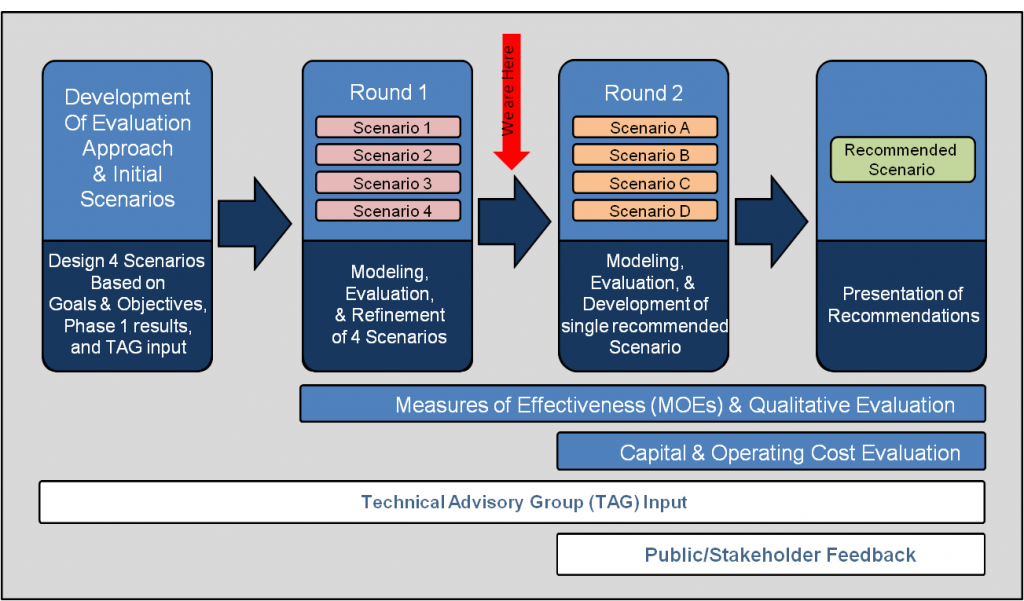TAG Meeting #9: RTSP Phase II: Review of Round 1 Scenario Results
In September, we presented to the TAG the results of the first round of scenarios modeled in the second phase of the RTSP study. Scenarios are defined by a collection of strategies or projects identified in the initial phase of the RTSP. The four scenarios tested focused on maximizing the existing infrastructure, expanding surface transit, expanding transit in the core, and expanding transit system wide. The performance of each scenario was evaluated against a set of measures to determine the relative effectiveness of each compared to the baseline scenario, defined by the regional list of projects in the currently adopted Constrained Long Range Plan, and MWCOG Cooperative Forecasts Round 8.0 land use.
Regional measures such as total transit trips, mode share, vehicle miles traveled, households and jobs within a half-mile of transit, travel time savings, and transit congestion were evaluated to not only determine how well the scenarios performed against each other over the baseline, but to assess how well each satisfied the goals and objectives of the RTSP. In addition to these broad-based regional measures, the first round of scenario modeling focused on how well each scenario addressed the need to expand capacity within the system core. Peak period Metrorail link capacity and transfer activity at key core stations were measured against the baseline scenario to determine if the potential build scenarios could provide sufficient capacity to serve future demand, and how well such added capacity could be utilized.
For more information on scenario descriptions, measured results, and key findings download meeting materials: TAG 9 Presentation of Results



Recent Comments